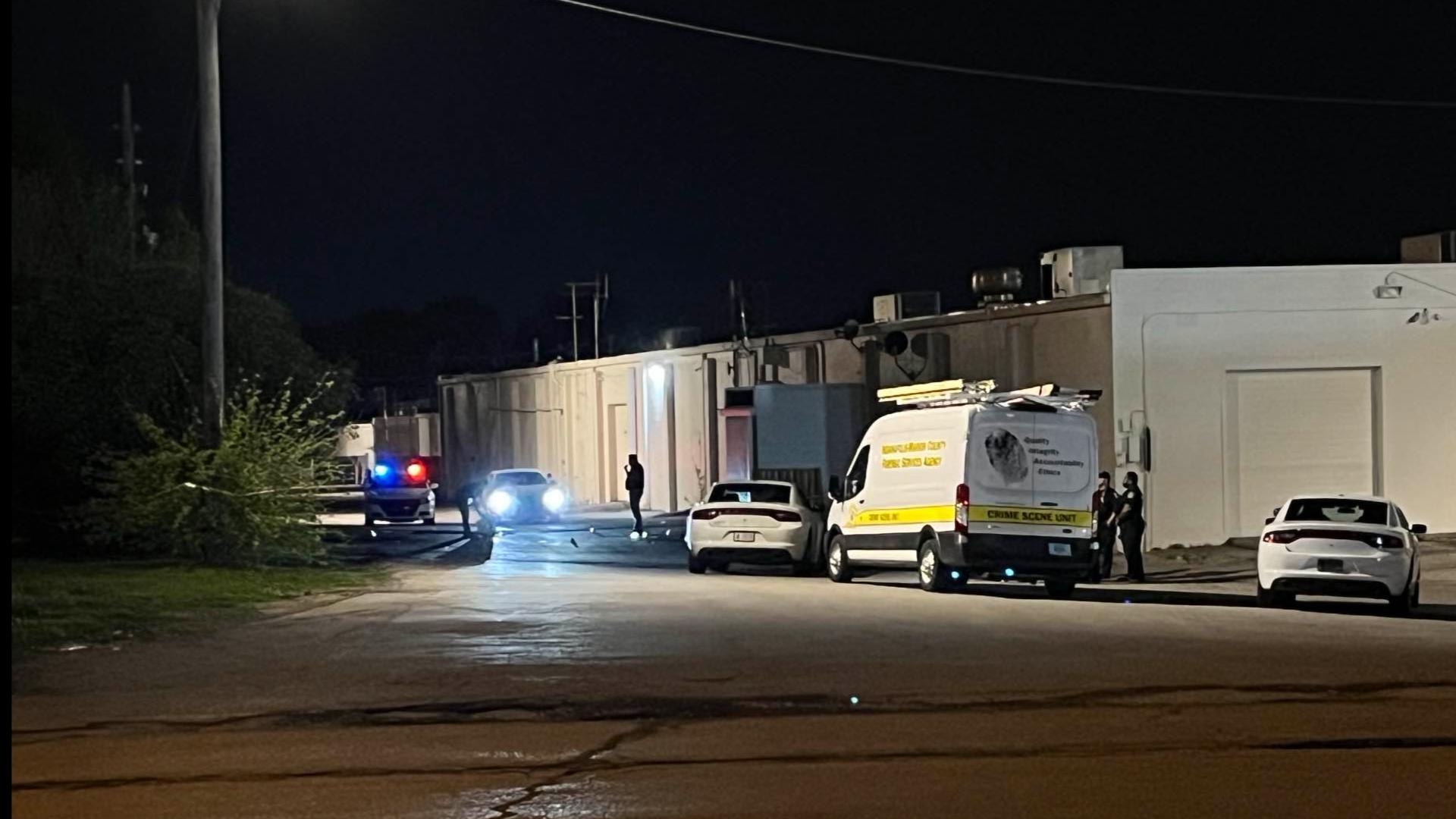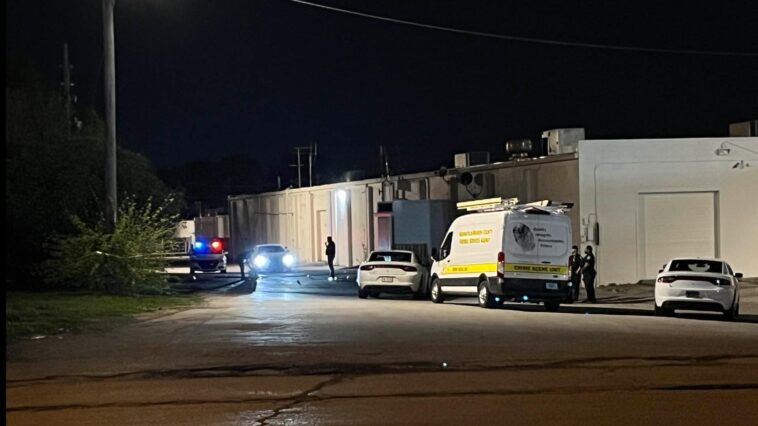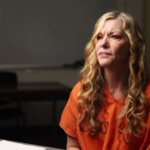
A Tragic Loss on Indianapolis’ West Side: A Closer Look at the Incident
The recent shooting on Indianapolis’ west side, which claimed the life of 42‐year-old Sapanna Harris-Williams, has left many in our community grappling with a mix of sorrow, confusion, and the need for deeper understanding. In this opinion editorial, we take a moment to reflect on the events of that fateful Saturday evening and examine the tangled issues surrounding urban violence, police response, and community healing.
The incident unfolded at approximately 8:15 p.m., when officers from the Indianapolis Metropolitan Police Department rushed to the intersection of Chadbourne Drive and West Saint Clair Street. Initially reported as a person shot near the Chapel Hill Shopping Center, this ordeal rapidly escalated into an event that continues to resonate with residents, policymakers, and law enforcement professionals alike.
Dissecting the Tricky Parts of Urban Violence
As we dig into the multiple facets of this incident, it is critical to understand the tricky parts that make urban crime analysis a challenging task. One must acknowledge that the city’s west side has witnessed a series of events that, while isolated, point toward a larger pattern of violence and tension.
Key issues include:
- Limited community trust in law enforcement
- Overwhelming challenges in securing urban neighborhoods
- The tangled issues of domestic disturbances triggering gun violence
- The nerve-racking unpredictability of violent incidents
The shooting forces us to look at the surrounding environment with a mix of empathy and critical analysis. Some of the confusing bits that contribute to these incidents include socio-economic stressors, diminished community engagement, and sometimes, the off-putting complications that arise within family dynamics. Each element contributes to an overall atmosphere of tension which, if not addressed, may continue to put community safety at risk.
Analyzing the Police Response: Managing the Fine Points Under Pressure
On that Saturday, police officers faced a scenario loaded with pressing problems and tense moments. The rapid arrival of the Indianapolis Metropolitan Police Department was meant to defuse the situation and offer immediate aid. However, their presence also highlights the often nerve-racking demands placed on duty-bound law enforcement in high-stakes urban settings.
Several key observations deserve mention:
- The need for swift decision-making when lives hang in the balance
- How officers must figure a path through both physical danger and emotional stress
- The importance of collaborating with community members to prevent future incidents
While the heroic actions of officers deserve commendation, the incident also exposes the subtle parts of law enforcement challenges. For instance, figuring a path through the maze of domestic disturbance calls – which can quickly spiral into dangerous encounters – is a testament to the myriad twists and turns involved in policing today.
Community Impact and the Hidden Complexities of Healing
In the aftermath of this tragic shooting, community members are left to contend with the ensuing grief and the daunting task of rebuilding trust among themselves and with law enforcement. It is super important to acknowledge that each victim leaves behind a network of family, friends, and even casual acquaintances who feel the ripple effects of such violence.
Community leaders and activists are stepping up efforts to address the subtle details of local safety concerns by:
- Hosting town halls and public forums to air grievances and propose solutions
- Organizing community support groups for survivors and families of victims
- Collaborating with local government to allocate resources for urban safety initiatives
- Promoting neighborhood watch programs and local regulatory reforms
These bullet points illustrate some of the super important measures that can help steer through the maze of community healing. While it is far from a simple cause-and-effect situation, addressing the nerve-racking gaps in urban safety is key to preventing further tragedies.
Taking a Closer Look at the Legal Implications
Incidents of this nature invariably prompt hard questions about the legal processes that follow. As we take a closer look into the legal aftermath of the shooting, it becomes clear that multiple legal challenges and responsibilities emerge. These include the need for:
- A thorough investigation to find clarity amid the confusing bits of evidence
- An impartial review of the circumstances leading to the shooting
- Ensuring that all parties affected by violence receive timely and fair justice
- Revisiting policies for domestic disturbance calls and responses
In cases where domestic disputes escalate and culminate in fatal encounters, the legal community is faced with numerous fine shades that require careful deliberation. It is critical that, while law enforcement is busy publicizing immediate safety concerns, legal experts also take a close look at the long-term ramifications. These include not only potential criminal charges, including homicide and manslaughter, but also civil liabilities that might emerge from negligence or a failure to adequately prevent further violence.
Furthermore, novel legal theories are being discussed regarding the responsibilities of parties who contribute indirectly to the atmosphere that might lead to violent episodes. As prosecutors and defense teams figure a path through these legal twists and turns, the entire system is urged to re-examine the delicate balance between public justice and community trust.
Insights into Domestic Disturbances and Violence Trends
Another area that this unfortunate episode sheds light on is the recurring link between domestic disturbances and community violence. Often, cases similar to the one we are discussing are part of a broader pattern where personal disputes spill over into public spaces, leading to tragic outcomes.
Let’s break down some of the tangled issues surrounding domestic disturbances:
- Escalating Conflicts: What at first appears to be a private matter can quickly morph into a public crisis when mediation fails.
- Relationship Stress: Family disputes, when left unresolved, may tip over into dangerous territory, highlighting the need for accessible mental health services.
- Community Isolation: In neighborhoods where people often feel they must tackle their problems alone, tensions can rise rapidly.
- Influence of External Factors: Economic hardship and a lack of community support networks may intensify personal conflicts.
These fine points serve as a reminder that we must get into the nitty-gritty of domestic issues to understand how they contribute to a wider public safety problem. Without comprehensive support and intervention strategies, the stressors that fuel these violent episodes will continue to be on edge.
A Table of Events: Timeline and Analysis
| Time | Event | Details |
|---|---|---|
| 8:15 p.m. | Shooting Reported | Officers responded to a call reporting a person shot |
| Shortly After | Arrival on Scene | Law enforcement located a vehicle with an injured woman |
| Subsequent to Arrival | On-Scene Assessment | The victim was initially listed in critical condition |
| Shortly After | Pronouncement of Death | Sapanna Harris-Williams was pronounced dead at the scene |
This table provides a visual breakdown of the sequence of events, helping community members piece together the timeline and prompting further investigation into what may have led to this ill-fated outcome. By outlining the events so clearly, we can better identify where the system might improve its response to similar situations in the future.
Community and Law Enforcement: Finding a Path Through Confusing Bits
An essential part of addressing urban violence is fostering an ongoing dialogue between law enforcement and the communities they protect. Community trust is built on transparency in the aftermath of incidents that are both overwhelming and filled with problems. In order to find your way out of the recurring cycle of violence, both sides must:
- Engage in community meetings and listening sessions
- Share detailed accounts of incidents and police actions
- Develop clear, actionable policies that address domestic disputes and neighborhood safety
- Invest in community outreach and mental health resources
These steps are not merely procedural. They represent a conscious effort to tackle the more nerve-racking parts of urban life. When the community and law enforcement work together, the overall fabric of public safety can be strengthened. It is the shared responsibility of all stakeholders – from local government to everyday residents – to create an environment where tragedies like this are less likely to occur.
Reframing Our Approach to Public Safety and Policy
The broader implications of such incidents extend far beyond the immediate neighborhood. Every occurrence of gun violence, especially when intertwined with domestic disturbances, forces us to re-examine our current public safety policies. Lawmakers must take a closer look at existing regulations and implement new strategies that are as adaptive as they are preventive.
Policy changes that merit consideration include:
- Enhanced Background Checks: Making it even more challenging for individuals with a history of domestic disputes or criminal behavior to access firearms.
- Community-Based Crisis Intervention: Funding services that help mediate conflicts before they escalate.
- Mandatory Reporting Reforms: Encouraging strict protocols when incidents are reported, so that law enforcement may figure a path through the maze of evidence with clarity.
- Investment in Mental Health Resources: Increasing support for programs aimed at managing the nerve-racking effects of personal stress before it leads to violent outbursts.
These policy suggestions are super important for not only addressing the after-effects of such events but also for putting measures in place that can prevent future tragedies. The legal review and legislative reform process is a delicate dance that requires input from law enforcement, policy experts, and community representatives alike.
Addressing the Nitty-Gritty Details: The Human Side of Tragedy
While the legal and policy discussions receive a great deal of attention, it is the human side of these events that often remains hidden behind statistics and headlines. In examining the aftermath of Sapanna Harris-Williams’ death, one must consider the profound personal loss felt by her family, friends, and the greater community.
The following points illustrate the small distinctions between what is reported in the media and what is experienced on the ground:
- Personal Grief: Beyond the legal terminologies, there are lives altered forever by the unpredictable spiral of violence.
- Community Mourning: The ripple effects are felt in schools, workplaces, and community centers where trust has been shaken.
- Calls for Reform: These events push individuals and organizations to take action, emphasizing the need for targeted support and policy changes.
- Stories of Resilience: Despite the overwhelming loss, many community members show an inspiring willingness to heal, learn, and rebuild.
Addressing these fine shades of human emotion requires more than just legislative or policing changes. It calls for a community-based approach to recovery—one that fosters open dialogue, collective healing, and an unmatched commitment to ensuring that similar incidents become a rarity.
Sorting Out the Tangled Issues: A Look at the Socioeconomic Factors
A critical element when taking a closer look into the roots of urban violence is examining the socio-economic landscape in which these incidents occur. The conditions faced by many residents on the west side of Indianapolis may contribute to the surge in violent episodes. Factors include:
- Economic Instability: Limited job opportunities and financial stress can exacerbate domestic tensions.
- Housing Challenges: Overcrowded conditions or poor housing quality often feed into the overall sense of community isolation.
- Educational Disparities: Insufficient access to quality education can create long-lasting gaps in opportunity and community advancement.
- Social Isolation: Without sufficient community support systems, individuals may feel forced to deal with overwhelming issues on their own.
Recognizing these complicated pieces helps public officials and community organizers identify areas where intervention is both necessary and even more effective. Programs that focus on economic development, better education, and stronger neighborhood bonds serve as key tools in mitigating the distress that often precedes violent episodes.
This analytical approach reminds us that the challenges of urban violence are not isolated to the individual incident. Instead, they are deeply interwoven with the broader fabric of community life—highlighting that improving public safety also means addressing these hidden complexities at their roots.
Strategies for Community Empowerment and Shared Responsibility
The question facing community leaders today is how to effectively manage your way through the recurring challenges that urban violence presents. Answering this requires a multi-faceted strategy that acknowledges the shared responsibility among residents, law enforcement, and policymakers.
Key strategies include:
- Empowering Local Voices: Providing community members with platforms where they can voice concerns and propose improvements.
- Enhancing Neighborhood Watch Programs: Encouraging local vigilance and cooperation with police when suspicious activities arise.
- Strengthening Crisis Support Services: Developing accessible mental health and social services for individuals dealing with stress or family conflicts.
- Improving Educational Outreach: Offering programs that educate the public on crime prevention, legal rights, and conflict resolution.
These bullet points encapsulate a layered approach to tackling the network of issues tied to urban violence. By empowering community members and creating robust support systems, it becomes possible to figure a path through even the most overwhelming challenges that affect public safety.
The Role of Media in Shaping Public Perception and Policy
Media outlets like WISH-TV play a crucial role in educating the public and shaping opinions about such incidents. While the detailed narrative of the shooting is reported factually, editorial commentary offers space to weigh in on the social, legal, and political implications.
Some super important elements that the media highlights include:
- Timely Reporting: Delivering immediate updates that keep the public informed during rapidly unfolding events.
- Data Transparency: Providing context through detailed timelines, tables, and multiple perspectives on the incident.
- Constructive Criticism: Calling attention to areas where policy and law enforcement responses could be improved.
- Fostering Dialogue: Opening up spaces for community discussion and engagement, which can ultimately lead to more comprehensive safety reforms.
Media organizations bear the responsibility of balancing immediate and factual recounting with opinion pieces that push for long-term reforms. The conversations they spark have the potential to influence how government agencies, local law enforcement, and community leaders address these nerve-racking issues in the future.
Looking Forward: Policy Reforms and Future Preventative Measures
In the wake of this tragic event, there is a pressing need to reflect on what changes would be super important to prevent similar occurrences. Lawmakers, law enforcement, and community advocates all have a stake in the process of building safer urban environments. Some of the key policy reforms that deserve careful consideration include:
- Revised Domestic Disturbance Protocols: Ensuring that every call involving personal disputes is met with the necessary sensitivity and urgency.
- Stricter Firearm Regulations: Reviewing licensing processes and background checks to reduce the risk of violence during domestic altercations.
- Expanded Community Outreach Programs: Establishing channels for dialogue and conflict resolution in neighborhoods known to be on edge.
- Increased Funding for Social Services: Directing resources into mental health programs, crisis intervention, and other support initiatives that can help mediate conflicts before they escalate.
Each of these proposals represents a practical step towards ensuring that the pain of one loss is not repeated in the future. They map out how stakeholders might work together to create policies that take into account both the subtle details of individual incidents and the wider tangled issues affecting entire communities.
Concluding Thoughts: Reflections on a Community in Mourning
As we reflect on the death of Sapanna Harris-Williams, we are reminded of the harsh realities of urban violence. The tangled issues that lead to such tragedies are not easily resolved; they require a concerted, long-term effort from every corner of the community. Yet, it is in moments like these—when the pain is collective and the need for change is undeniable—that the seeds of long-lasting reform can be sown.
Now is the time for policymakers, law enforcement, and residents to work side by side. By sorting out the nerve-racking challenges and making targeted improvements to public safety policies, there is hope that future tragedies may be averted. The cooperation between community members and police must continue to evolve, and together, we need to figure a path out of the constant cycle of domestic disturbances that often spill over into public peril.
Let this tragic event serve as a watershed moment—a call to reevaluate not only our response to immediate crises but also the underlying socio-economic conditions that foster an environment where violence can take root. It is only through transparent dialogue, community empowerment, and carefully designed policy reforms that lasting change can be achieved.
As we move forward, let us carry with us the memory of those lost and the hope for a safer, more united future. The journey is undoubtedly overwhelming and filled with tricky parts, but together, the community can navigate these challenging twists and turns to build a stronger foundation of trust and security.
Key Takeaways for a Safer Future
To summarize the important points discussed in this editorial:
- Understanding the Incident: The tragic shooting that took place on Indianapolis’ west side highlights the urgent need for improved community safety and immediate policy intervention.
- Addressing Domestic Disturbances: A deeper analysis reveals that unresolved family conflicts, coupled with external stressors, can quickly escalate into violent public incidents.
- Policing in High-Stress Environments: Law enforcement must be prepared to make split-second decisions amid intimidating and unpredictable circumstances, underscoring the need for additional resources and training.
- Community Action as a Catalyst for Change: Engaging community members through local meetings, crisis intervention programs, and educational outreach is a key component in creating a more secure urban setting.
- Policy Reforms: Re-examining legal procedures, firearm regulations, and domestic disturbance protocols is essential for preventing future tragedies and rebuilding trust between communities and policymakers.
Looking Ahead: A Commitment to Change
The conversation must not end with coverage and analysis. As we witness these tragic events unfold, it is crucial that the momentum for change continues. Community leaders, police departments, and policymakers are all called upon to work together in addressing the small distinctions and subtle details that can make all the difference in preventing further loss of life.
Ensuring that appropriate support is provided—whether through legal reforms, enhanced community services, or improved crisis intervention protocols—will not only honor the memory of those lost but also strengthen the overall fabric of our urban communities. By investing in targeted solutions and acknowledging the overwhelming challenges, we stand to create a future that is far more secure and compassionate.
In the end, true progress lies in our ability to learn from today’s tragedies and transform them into tomorrow’s action plans. It is an intimidating process, loaded with issues that are both delicate and hard-hitting. Yet, when integrated with collective resolve, even the most nerve-racking problems can be sorted out through persistent dialogue, intentional policy adjustments, and continuous community engagement.
Let us commit to ensuring that the memory of Sapanna Harris-Williams inspires stronger bonds within our community, fosters a renewed drive for safer neighborhoods, and translates into real, measurable progress in tackling urban violence.
While the road ahead may remain tangled with twists and turns, our shared responsibility and determined action can pave the way for a brighter, more secure future for everyone.
Originally Post From https://www.wishtv.com/news/crime-watch-8/woman-killed-in-shooting-near-chadbourne-drive-and-west-saint-clair-street/
Read more about this topic at
Indianapolis FedEx shooting
1 arrested after woman killed in west Indianapolis shooting


